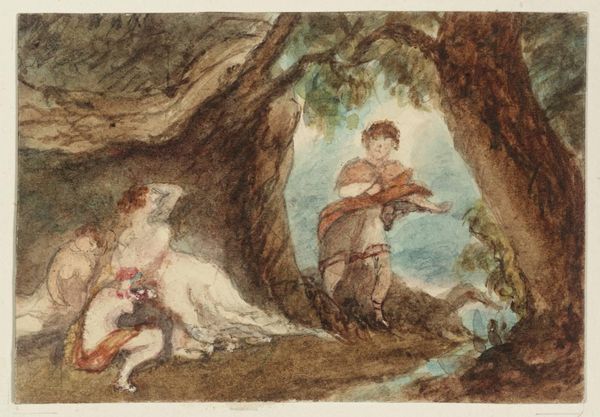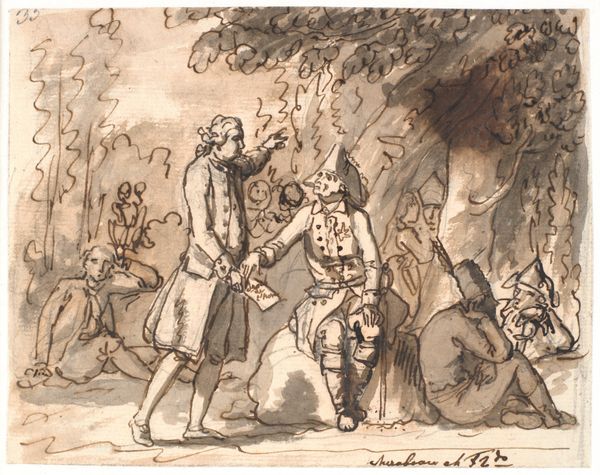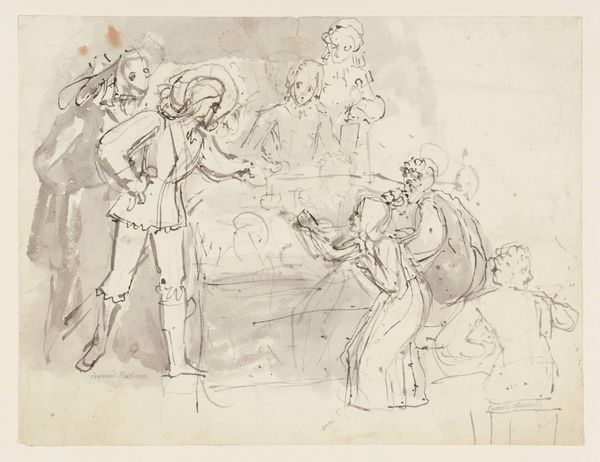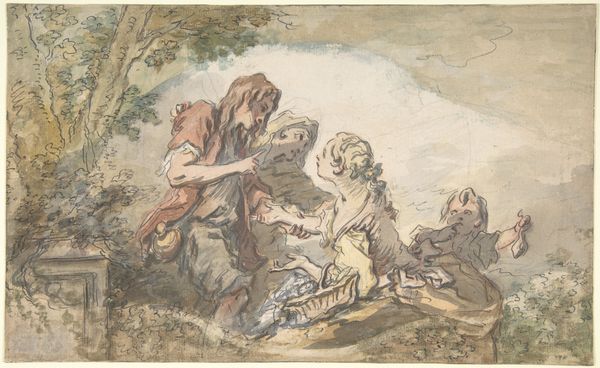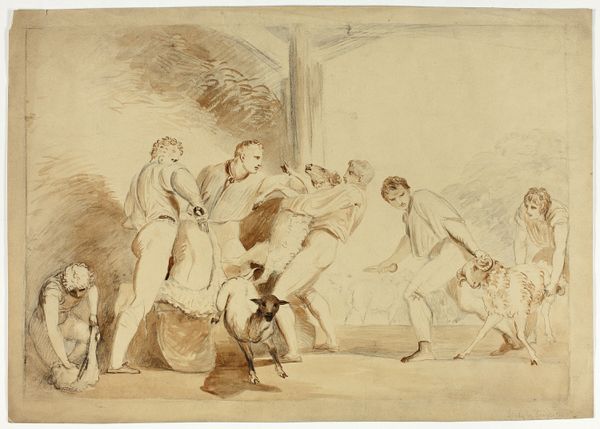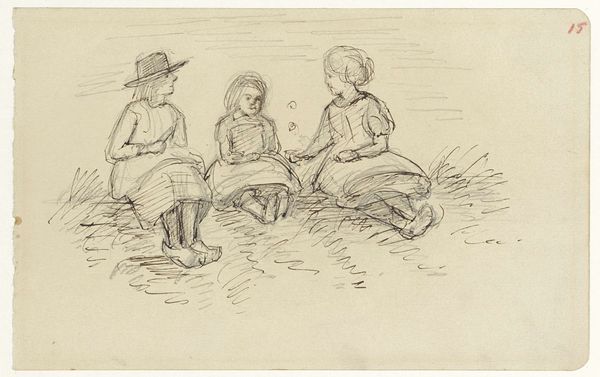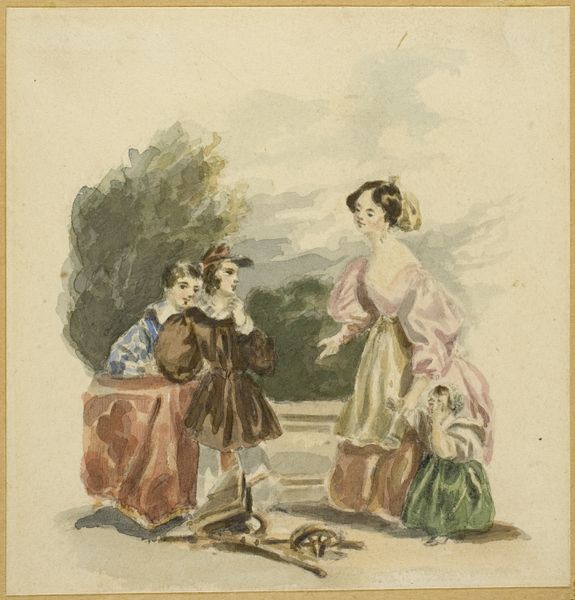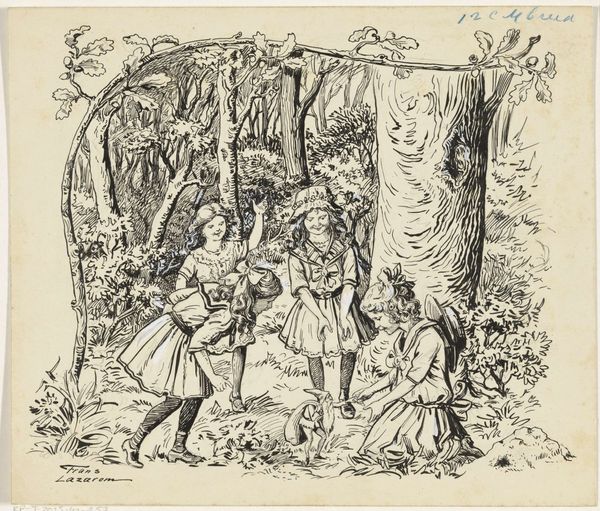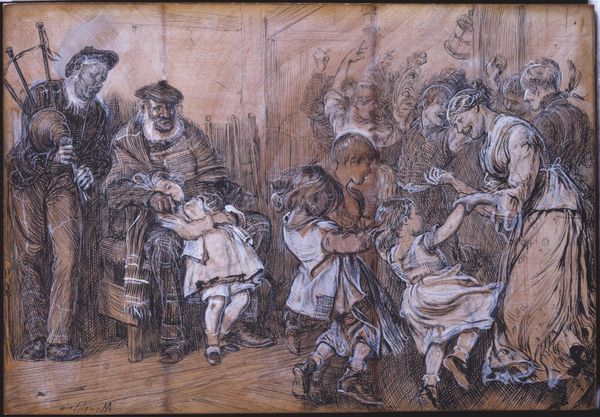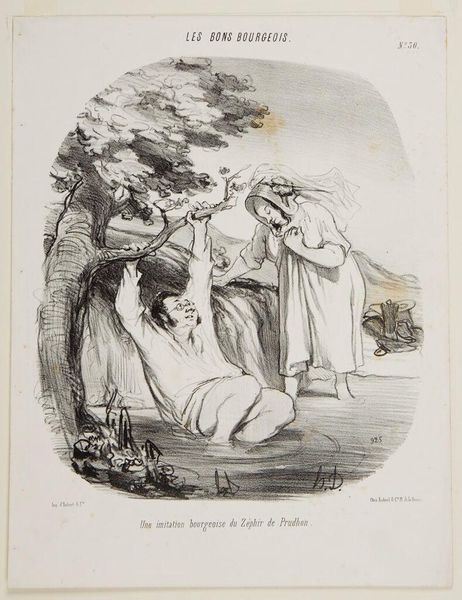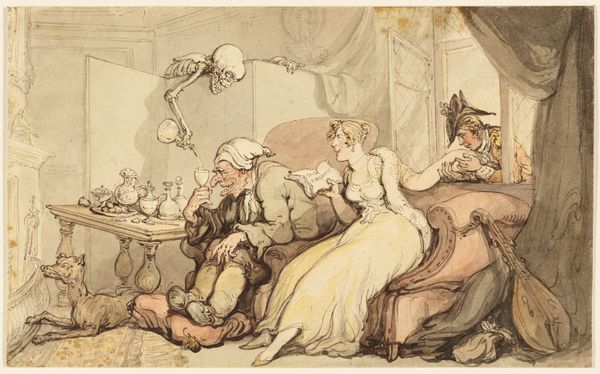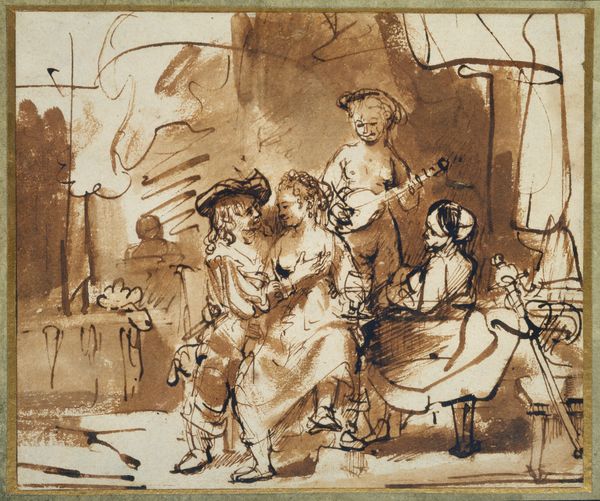
plein-air, watercolor
#
figurative
#
impressionism
#
plein-air
#
landscape
#
figuration
#
watercolor
#
genre-painting
#
watercolor
Copyright: Public Domain: Artvee
Editor: Here we have Albert Edelfelt's "Huvila lähteen vierellä, harjoitelma," a watercolor sketch depicting a waterside picnic. There’s such an air of leisure and elegance; it almost feels like stepping into a scene from a play. How do you interpret this work, and what broader narratives might it connect to? Curator: This is a fascinating glimpse into bourgeois leisure, isn't it? But beyond the surface, it invites questions about class, privilege, and the performance of social roles. Who is included in this idyllic scene, and more importantly, who is excluded? Consider the history of leisure itself, who historically has had access, and how gender dynamics are playing out. Editor: It does feel very posed, and maybe even staged, with the man playing the horn front and center. Curator: Exactly. And what does that performance tell us? Is it merely decorative, or does it serve a deeper function in reinforcing a certain identity, and, consequently, excluding other identities? Think about the power dynamics inherent in representing a particular version of reality and masking structural inequities. Editor: So, it's less about simply capturing a moment and more about constructing a specific image? Curator: Precisely. We can also examine this through a postcolonial lens. In Edelfelt’s time, there was considerable fascination with portraying “exotic” locales. The seemingly innocent representation of leisure could obscure a history of exploitation or gloss over the less savory details of wealth acquisition. Does knowing the historical context shift our perception? Editor: It certainly makes me see the image with different eyes, less romantic, and more critical. Curator: And that's precisely what engaging with art history should do - equip you to decode power structures and question what narratives are being presented and whose voices are being left out. Editor: It is like this peaceful image has layers of history embedded in it. Curator: Every artwork is a product of its time, reflecting and shaping the social, political, and economic realities of its creation. Let us always critically analyze art as historical documentation and a catalyst for change.
Comments
No comments
Be the first to comment and join the conversation on the ultimate creative platform.
